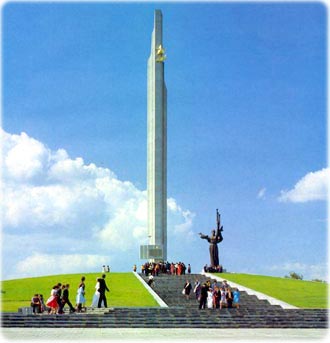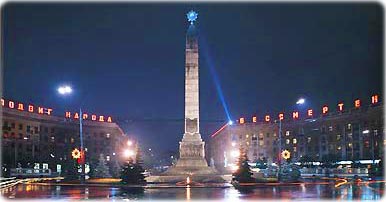Belarus
Victory Square, in Minsk, capital of Belarus, founded in the 11th century. Today it is a new city with wide streets and large parks (photo Press Service - Belarus).


After seven decades as a constituent republic of the USSR, Belarus attained its independence in 1991. It has retained closer political and economic ties to Russia than any of the other former Soviet republics. Belarus and Russia signed a treaty on a two-state union on 8 December 1999 envisioning greater political and economic integration. The capital is Misk.
Administrative divisions: 6 voblastsi (singular - voblasts') and one municipality (harady, singular - horad); Brestskaya (Brest), Homyel'skaya (Homyel'), Horad Minsk, Hrodzyenskaya (Hrodna), Mahilyowskaya (Mahilyow), Minskaya, Vitsyebskaya (Vitsyebsk).
Terrain: generally flat and contains much marshland. Glacial scouring accounts for the flatness of Belarusian terrain and for its 11,000 lakes. The highest point is Dzyarzhynskaya Hara 346 m. The total area: 207,600 km².
Climate: cold winters, cool and moist summers, transitional between continental and maritime.
More: map of Belarus ►
Monument in the Victory Park, Minsk, Belarus (photo Press Service - Belarus).
|
Copyright © Geographic Guide - World in Pictures. |
